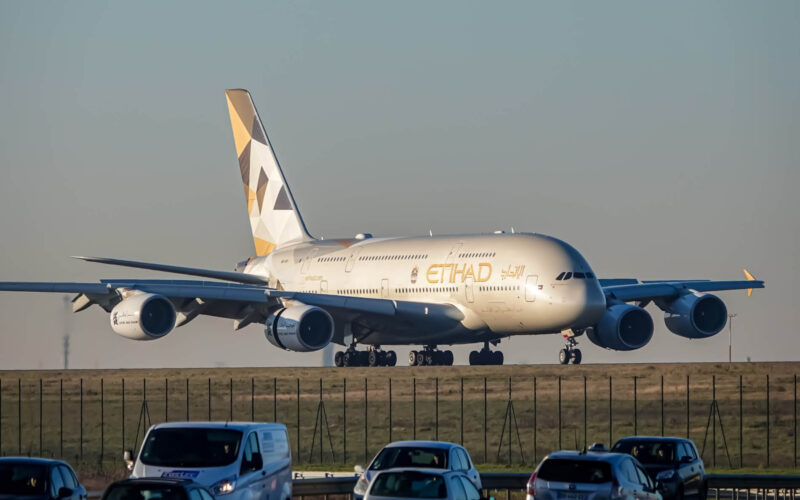The article was first published on October 14, 2020.
In 2015, Etihad Airways changed the definition of luxury onboard an aircraft when its Residence suite, a three-room first-class offering that included a bedroom, a living room, and a lavatory with a private shower, took to the skies for the first time. Five years later, the market has shifted and the Airbus A380 is not needed anymore due to its massive operating costs. Without the double-decker, what does the future hold for the Abu Dhabi-based airline’s fleet?
Weak position
Despite its unequivocally recognized luxury and one-of-a-kind service, the Gulf carrier has struggled financially for quite a while. Its last profitable year was 2015, when Etihad Airways posted its highest profit number of $103 million.
The airline, throughout the years, invested in several carriers across the globe, including the now-defunct Air Berlin (AB1) and Jet Airways, a bankrupt Alitalia, and a restructured Virgin Australia. The investments did not quite pan out.
Massive losses, as high as billions, followed the airline since 2016. In 2019, it finally launched a restructuring program with the goal to once again return to profitability. The Abu Dhabi flag carrier started to shuffle its order book around in order to reduce capital expenses. 10 orders for the Airbus A320neo came first, as Etihad axed the mid-size A320 family member from its backlog. The order for 26 Airbus A321neo aircraft remains intact, according to the latest orders and deliveries figure presented by Airbus.
Wide-body aircraft orders followed suit. The airline significantly cut its Airbus A350 order: instead of 62 planned Airbus flagship wide-body, only 20 remained. Five of those were delivered straight to storage throughout 2019, with the planned entry date in 2021. The order for the Boeing 777X was reduced from 25 to six, while orders for the Boeing 787 Dreamliner would be either rescheduled, restructured, or reduced. According to reports, the airline agreed with the two manufacturers not to disclose any order changes publicly.
According to the latest orders and deliveries data, Etihad Airways received 38 Dreamliners, while 33 orders of the 787 are still unfilled.
Going small
With the additional fact that the company has phased out all of its Airbus A330s, the airline will, theoretically, operate five different aircraft families. The Airbus A320, A350, and A380, and from Boeing’s lineup, the 777 and 787. With the potential retirement of its Airbus A380, four different cockpits will remain in the airline’s lineup. After all, the company’s own chief executive Tony Douglas stated on Etihad’s Altitudes podcast that the A380 was “heavily handicapped by two engines too many, and other aircraft that can do the job far more efficiently, far more sustainably.”
The airline had finally begun to pull the cord on the Super Jumbo. In November 2020, Etihad Airways shipped its first A380 (registered as A6-APA) to Tarbes Lourdes Airport (LDE) in France, for long-term storage and possibly retirement. Two additional A380s, namely A6-APB and A6-APC joined A6-APA at LDE in early-December 2020.
Without the A380 and six incoming Boeing 777X aircraft, the airline seemingly aims to cover a wide range of markets while downsizing at the same time. 19 passenger-configured Boeing 777-300ERs remain, and with the potentially still on-track order book of 33 Dreamliners, those could be destined to replace the now-aging Triple Sevens and the retired A330.
On average, Etihad’s 777-300ERs are almost 10 years old, which means that the Triple Sevens are approaching their second round of heavy maintenance checks, namely C and D-checks. Adding the fact that the -300ER has dating technology compared to the 787 or the 777X, which Etihad has on order, it would not be a very wild assumption that they are set to be phased out in the coming years. All in all, with the eventual retirement of the Airbus A380 and the Boeing 777-300ER, Etihad would start limiting its exposure to the over-400 seat market. The airline would follow the trend whereupon major hub operations, much like its own based in Abu Dhabi International Airport (AUH), are slowly replaced by point-to-point operations.
After all, the airline has launched a low-cost carrier Air Arabia Abu Dhabi. Partnered with Air Arabia, a United Emirates Arab-based LCC, the new airline is supposed to bring leisure travelers to the capital of the UAE with a heavy emphasis on point-to-point operations.
AeroTime News approached Etihad Airways for comment.

